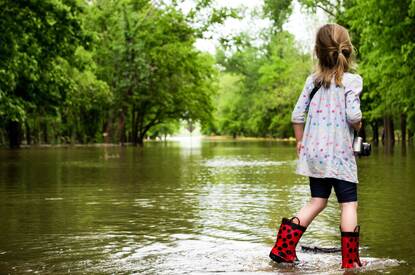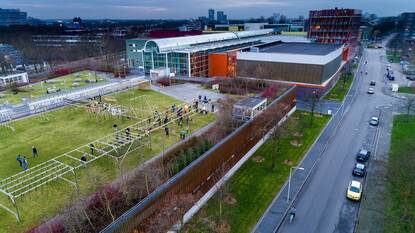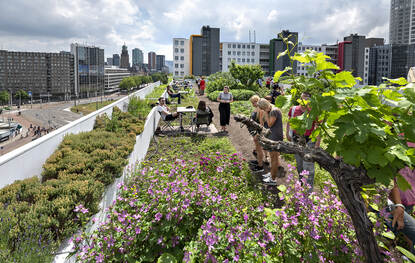Jesse Limaheluw is a researcher and PhD student at the Centre for Zoonoses and Environmental Microbiology. He is investigating the link between climate change and the increase or decrease in environmentally transmissible infectious diseases. Five questions for Jesse:
How are climate change and infectious diseases related?
“All pathogens – viruses and bacteria – are affected to some extent by climate-based factors such as temperature, UV radiation, air humidity and wind. We’re talking about pathogens that can be transmitted via water, air or soil. Mosquitoes and ticks are also affected by climate, and so are foodborne pathogens.
If pathogens are affected by climate, then they are also affected by climate change. More heat, more frequent heavy rainfall: all of that can influence the prevalence of disease in the Netherlands.
Although that is not is not the whole story. Climate change also influences the process of how diseases spread, including our own behaviour. As a result, climate change also has an indirect impact on the increase or decrease in certain pathogens and the associated diseases.”
Which diseases will occur more frequently in the Netherlands?
“It is still impossible to predict that accurately at this point. What we do know is that levels of Vibrio bacteria in seawater are increasing in the northern hemisphere due to climate change. This is because seawater is growing warmer. That means that the Netherlands could also see an increasing risk of Vibrio infections. One example is gastrointestinal infection from eating oysters. The bacteria can also lead to wound infections caused by swimming in the sea.
Mosquitoes are also cause for concern. The good news is that the Asian tiger mosquito has not yet established a presence in the Netherlands, even though the Dutch climate could already support the species. Thanks to effective pest control, tiger mosquitoes are not yet a major problem. Tiger mosquitoes can carry arboviruses like dengue, Zika and chikungunya. Even though it is growing warmer, the Dutch climate is not optimal for this pathogenic agent.”
Can floods such as we saw in southern Limburg lead to more disease?
“Yes, extreme rainfall can affect water quality. Floodwater can cause gastrointestinal and respiratory infections, for example through exposure while cleaning after the waters recede.
Legionella bacteria are also more prevalent during a wet summer. The spread of those bacteria is definitely associated with weather conditions. Further research is still needed to determine the extent to which that increase is actually related to climate change.”
What solutions are available?
“An effectively structured living environment is vitally important to counter climate-affected pathogens. Many municipalities are working on climate adaptation. More water in the city is an effective measure for cooling the surrounding area. A water playground can often be a great solution, and also provides additional water storage during peak rainfall. However, standing water provides an excellent environment for breeding mosquito larvae. More water in the city can also lead to increased exposure to droplets or aerosols that could contain pathogens.
Most municipalities take these factors into account in planning or designing water playgrounds or fountains. Still, these risks do need to be considered.”
What role does RIVM play in these solutions?
“RIVM supports municipalities in designing water playgrounds, for example. We also communicate research results to Municipal Public Health Services (GGDs). At the national level, we provide a knowledge base. We conduct research and give advice.
There is still much to learn, although we do know more and more as a result of international research or our own laboratory investigations. Overall, a fair amount of research is being done on mosquitoes, while transmission routes via water, food and soil still need more attention. It is good to focus on those routes as well.”
Would you like to know more?
“For the Ministry of Economic Affairs and Climate Policy, we worked with researchers from other domains within RIVM to show that climate policy will have a beneficial influence on health, including infectious disease.”
RIVM report “International climate policy: health gains in the Netherlands through limiting climate change”
RIVM website Climate change and Health
WHO Collaborating Centre Risk Assessment of Pathogens in Food and Water








